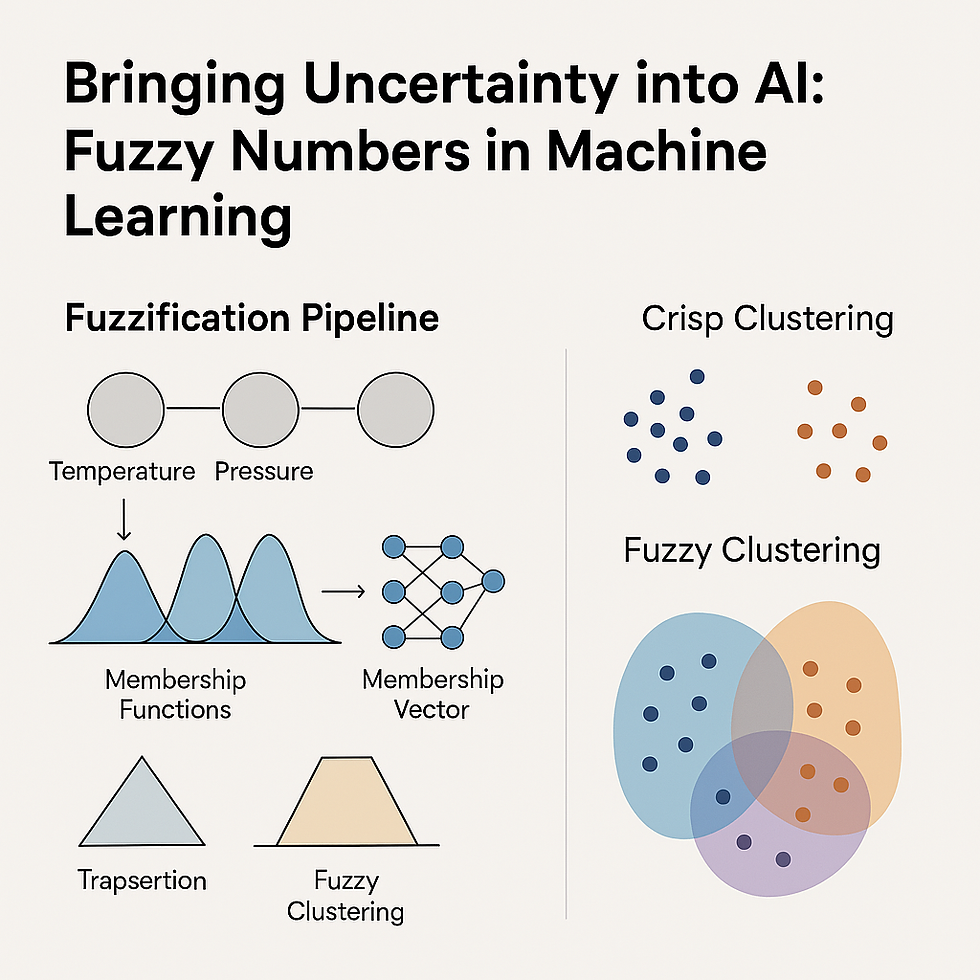🌫️ Making Sense of Uncertainty: Crunching Numbers with Fuzzy Math
- Gnosis Analytics Crew

- Jul 3
- 2 min read
In traditional mathematics, numbers are rigid: 5 is 5, 10 is 10. But the real world isn’t so crisp. What if someone says “I’ll arrive in about 10 minutes,” or “the temperature is roughly 25°C”? These phrases involve vagueness—and that’s where fuzzy logic enters the picture. In this study, we take that concept further by developing how to do math with a special class of fuzzy numbers called Gaussian fuzzy numbers.
🧮 What Are Gaussian Fuzzy Numbers?
Imagine a number that’s not just a point, but a soft “cloud” centered around a likely value—like saying, “this value is probably around 50, give or take.” That cloud is shaped like a bell curve (aka a Gaussian curve), reflecting uncertainty.
These fuzzy numbers are powerful for real-world modeling: from AI systems making ambiguous decisions to engineering tolerances and weather predictions. But here’s the twist—just like regular numbers need rules for adding, multiplying, etc., fuzzy numbers need their own arithmetic too.
🧠 What This Research Achieve
In this work, we define and analyze the basic operations (addition, subtraction, multiplication, division, reciprocal, exponential and logarithmic) for Gaussian fuzzy numbers in a mathematically sound way. That might sound simple, but when your numbers are more like "probable ranges" than fixed values, these operations become trickier to get right.
Our contribution:
Proposed consistent formulas for elementary operations with these fuzzy objects
Ensured that the results stay within the space of Gaussian fuzzy numbers—preserving their structure
Provided visual examples and simulations to show how these operations behave
An easily generalisable way of doing operations with Gaussian fuzzy numbers.
🧩 Why It Matters
This work lays the foundation for:
More advanced fuzzy classification systems, where models work with uncertainty instead of pretending it doesn't exist
Simulation and forecasting under vague or incomplete data
Future applications in control systems, robotics, finance, AI and beyond—anywhere that imprecision is the norm
In short, this is about giving computers and analysts the tools to think more like humans—not in strict equations, but in informed approximations.
Charizanos, G., Demirhan, H., & Icen, D. (2024). Elementary Operations with Gaussian Fuzzy Numbers. Available at SSRN 4997557.






Comments